We bought a soy milk machine some months ago.
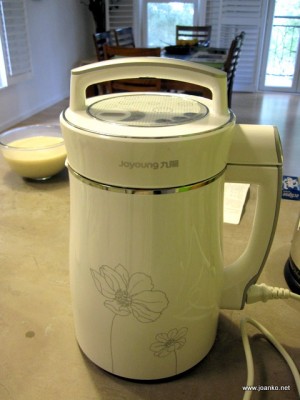
In 22 minutes, it pulverises and heats a small cup of soy beans into a litre of soy milk.
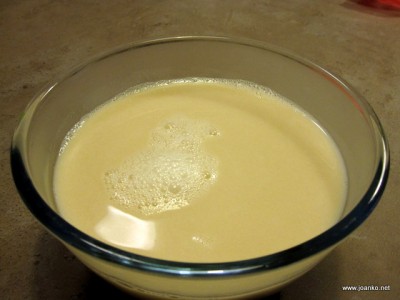
I then add 2 tablespoons of honey or maple syrup to sweeten it. It doesn’t taste like the soy milk you buy from supermarkets, as it doesn’t have malt. It’s more like Asian soy milk but I don’t make it as sweet as that.
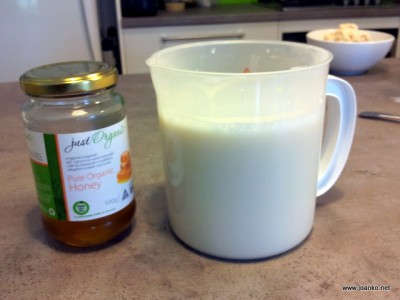
For a long time, Damjan and I wondered what to do with the leftover soy bean solids. It felt like we were throwing out a lot of it. After some focused Googling, we discovered that soy pulp is called okara. It is in fact highly nutritious with protein and fibre.
The first time we reused it, we made an lemon cake of almond meal and okara.
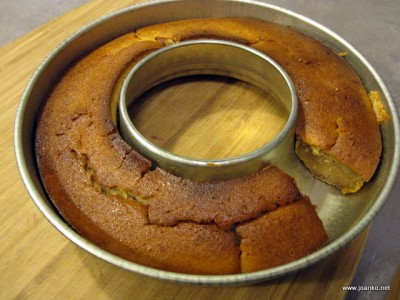
We’ve now added to our okara repertoire vegetarian burger patties, knedle soup (vegetable soup with dumplings made of flour and okara) and bread with okara filling.
Sometimes, though, we can’t keep up with all the okara that I generate with the soy milk machine. So a few weeks ago, we bought a bokashi bin, which is a little composting bin that we can keep in our apartment.
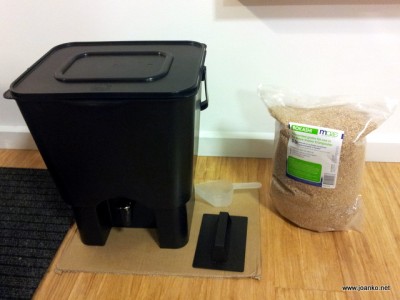
We started it off on banana peels, but now it takes three quarters of our waste — egg shells, tissues, fruit and vegetable peels, corn cobs and okara.
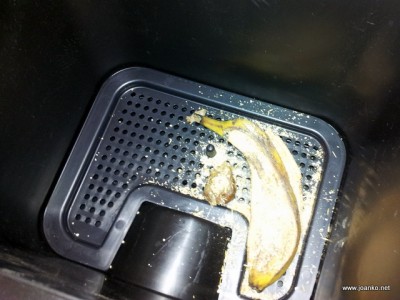
We’re halfway through our first binful and, as promised, there are no smells from the bin. We’ve barely had to empty our normal kitchen bin in the past two weeks.
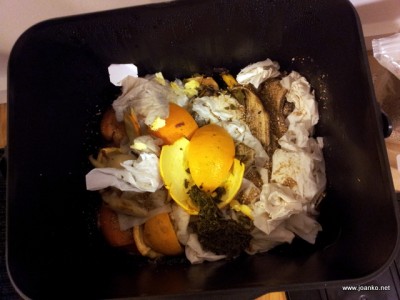
If you have a garden and would like some nourishing compost, drop me a line.
how do you deal with the leachate?
Ooh I’ll have to tell my parents about the okara. They hate wasting it too – I think they take it to Cat’s place and give it to her chickens.
Hi Alden! The first time we drained the leachate and used it in our pot plants. Apparently you’re meant to dilute it 100:1 (or something like that) but we didn’t. Plants still seem to be alive.
Hi Kaye — converting okara into eggs is a good use of it! I particularly like the okara patties for veggie burgers. There’s a page with lots of recipes — Ellen’s kitchen.